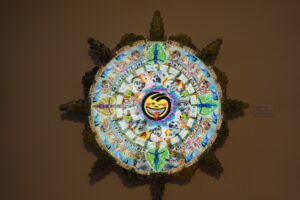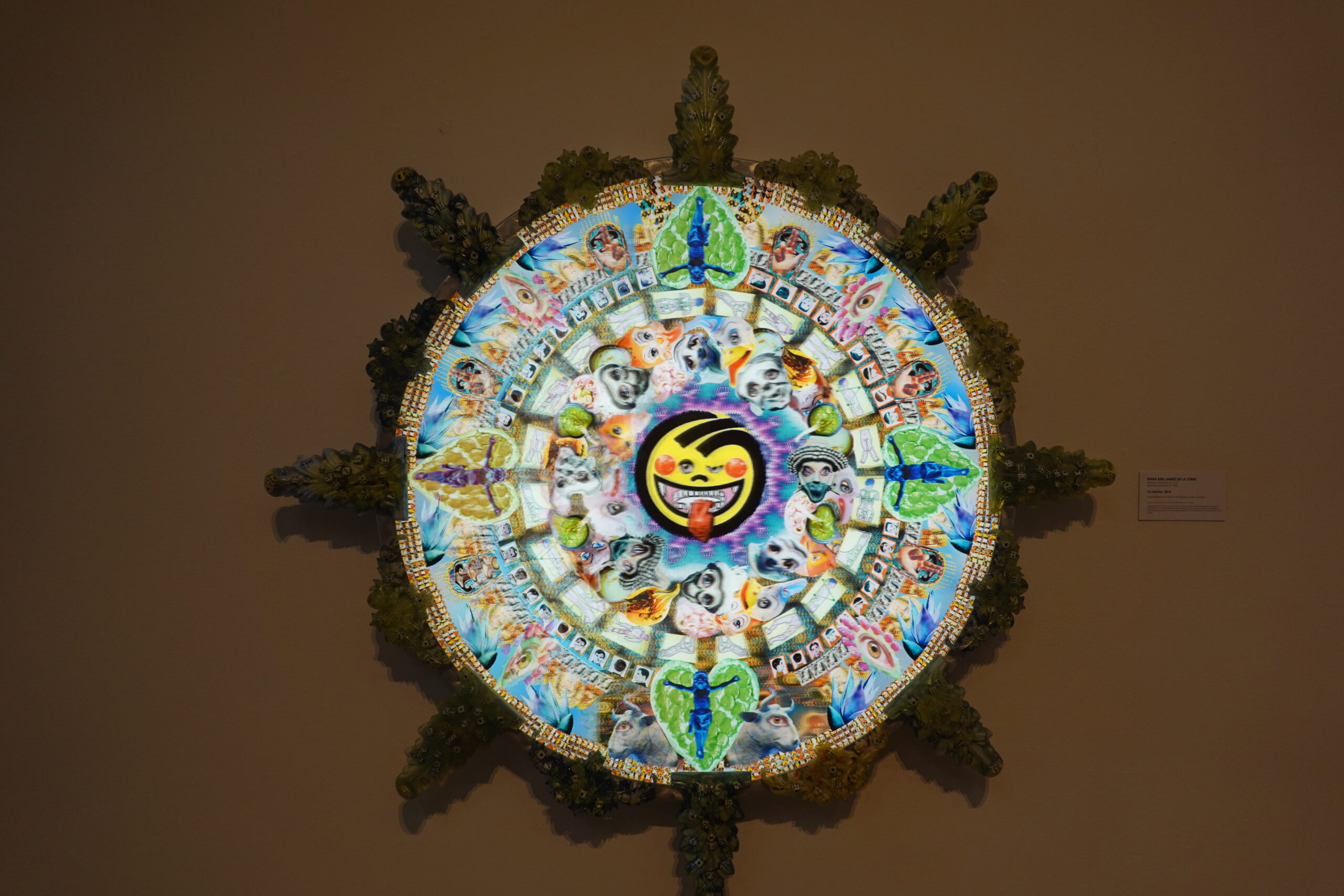Corpus Christi is host to a museum that offers quite a contrast to the culturally-deprived museum landscape of Austin. The Art Museum of South Texas is currently hosting two notable exhibits that pay tribute to the Native and Latino aspects of America’s population.
The larger of the exhibits is a retrospective on the glass sculptures of the de la Torre brothers. They were born in Guadalajara: Einar in 1963 and Jamex in 1960. According to their website, their artworks “reflect a complex and humorous aesthetic that could be seen as multi-layered baroque.” With elements ranging from pre-Columbian art to German expressionism, the profusion of glass sculptures on display are a riot of colours and forms that stretch the boundaries of art. The title of the exhibit, Collidoscope, is apt, as many art forms collide here.
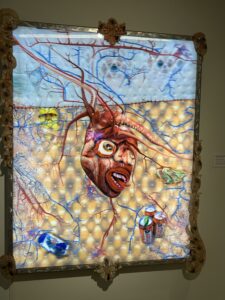 The main display room at the museum, and other smaller rooms, are chock full of their work. The largest are circular in form, and about 8 feet wide. Many others are three-dimensional, while some of the 2D pieces are lenticular, offering a changing view as one walks past them. The level of tiny detail is astonishing; many minutes could be spent looking at all the visual elements of any particular work.
The main display room at the museum, and other smaller rooms, are chock full of their work. The largest are circular in form, and about 8 feet wide. Many others are three-dimensional, while some of the 2D pieces are lenticular, offering a changing view as one walks past them. The level of tiny detail is astonishing; many minutes could be spent looking at all the visual elements of any particular work.
Many of the works are disturbing, with scenes of horror and the macabre. Ascribing the word ‘beautiful’ to any of them will, for many, exceed the boundaries of that word. Relying on shock value and the grotesque seems to be the animating principle here. Many would find a welcome home in a haunted Halloween exhibit. The only thing lacking here is the spooky music. Fortunately the museum is a very open, bright space, with a picture window through which one can see the Gulf of Mexico.
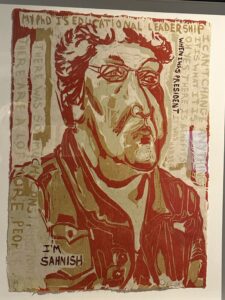
A complete change of tone is the very welcome exhibit Native Impressions, which features vibrant and piquant portraits of Indigenous people. Each portrait was created by printmaker Daniel Heyman and graphic designer Lucy Ganje. The 2015-2016 portfolio was printed in North Dakota on handmade paper from the pulp of trees grown on local reservations.
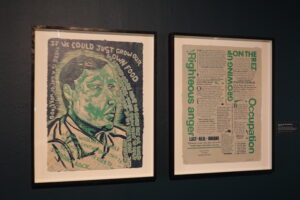 Both male and female subjects are shown in this exhibit, which is well displayed in its own room at the museum. The portraits of people from a wide range of life experiences are evocative and multi-coloured. Some are educators, others are entrepreneurs, politicians, or veterans. Surrounding each portrait is a collage of text, and each is accompanied by a frame of equal size with their life story in their own words on subjects such as family history, their proud association with a particular tribe, and the dark legacy of forced assimilation. This is a contemplative exhibit, one to admire and savour.
Both male and female subjects are shown in this exhibit, which is well displayed in its own room at the museum. The portraits of people from a wide range of life experiences are evocative and multi-coloured. Some are educators, others are entrepreneurs, politicians, or veterans. Surrounding each portrait is a collage of text, and each is accompanied by a frame of equal size with their life story in their own words on subjects such as family history, their proud association with a particular tribe, and the dark legacy of forced assimilation. This is a contemplative exhibit, one to admire and savour.
Just to take one example, we see here a portrait of Sannish. Along the top it reads “My PhD is Educational Leadership.” In the text collage beside the portrait, we read “When I was growing up, because my name is YellowBird, because I always had long, black hair and I was fairly dark, walking back and forth to school people would drive by and throw things at me. What I learned is that if you believe in yourself, and you know you’re a good person, no matter what anyone says, you just move out of the way and it falls off.”
On the right of the collage, he writes “My dad was a very strong promoter of education. He made sure all 13 children in our family went to school. He wanted us to live a better life.” Sannish also writes “We were expected to go to college. I have a Masters in Educational Administration and a PhD in Educational Leadership. I was the tribal college president for seven years.”
Writing about this art project by Heyman and Ganje: “I was skeptical about this project, three White oeople coming in and talking to us, taking our image and putting it up someplace, and you’ll get the applause. We’ll be pictures, including what we say or do not say. It’s what we see. But it’s also a chance to hopefully educate people about what’s happening.” This art museum should certainly be commended for giving these Native voices the opportunity to be heard.
And this is just a small excerpt from one artwork. Each one is similarly filled with insights into the life of Indigenous peoples.
If you are visiting Corpus Christi, be sure to visit this museum. With its dramatic pyramid architecture and fine permanent collection, there is much here for the eye and the mind.
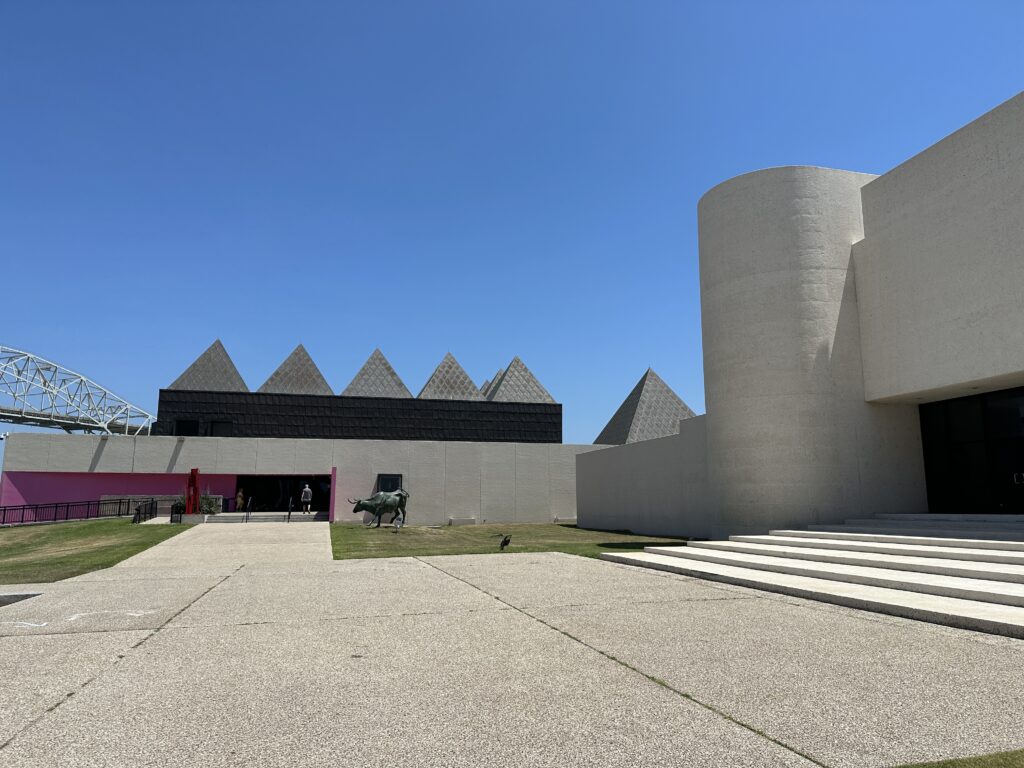
The de la Torre exhibition was a collaboration between the Smithsonian Institution’s National Museum of the American Latino (NMAL) and The Cheech Marin Center for Chicano Art & Culture of Riverside Art Museum. It is on display till Sep 30, 2023
In Their Own Words: Native Impressions. This is one in a series of American art exhibitions created through a multi-year, multi-institutional partnership formed by the Amon Carter Museum of American Art as part of the Art Bridges Cohort Program. It is also on display till Sep 30, 2023
Visit the website for more on the museum:
The website of the de la Torre brothers:
https://www.delatorrebrothers.art/
Lead photo: Ya Sabritas, 2014. Lenticular print in LED lightbox, resin castings.
Photos by C. Cunningham.
